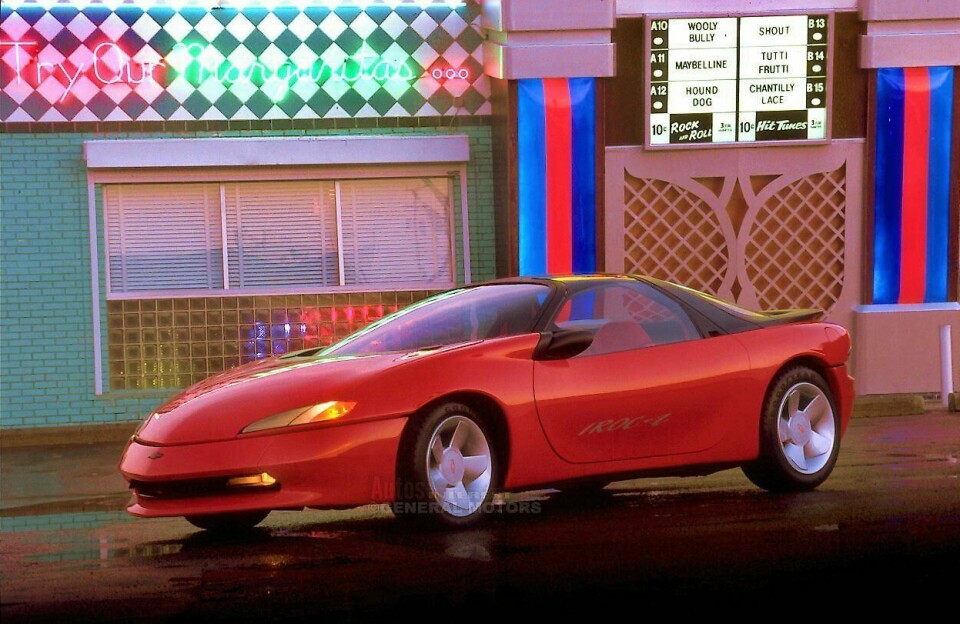
Concept Car of the Week: Chevrolet California Camaro IROC-Z (1989)
The ‘running sketch in steel’ that rebooted the muscle car genre
It’s almost LA auto show time so what better way to whet our appetites than to delve into its list of historical debutants for this week’s CCotW.
The 1980s was a rather grim decade for the US motor industry with ranges of generally outdated cars that were being comprehensively outshone by Japanese imports. But towards the end of the ‘80s there were signs that the Big Three had regrouped and redoubled their efforts for the 1990s. For the first time in 20 years modernity – futurism even – was the driving force behind the industry even if the showroom-ready results were still some years away.

In 1989 the Chevrolet Camaro was the F-body model introduced in 1981 that belonged to a simpler age – to put it into prospect this square-rigged muscle car was being shown the way by the likes of the then-new Mazda MX-5 Miata which was a smarter, lighter, smaller and more sophisticated take on the sport car concept. A new type of all-American performance car was needed.

The 1989 LA auto show saw Chevrolet’s intentions made clear – the front-engined, rear-drive coupe format remained but the style in which it was presented was anything but archaic. It helped define the growing trend towards organic – almost biomorphic – design that defined the products of the early 1990s with soft transitions where once there were part lines and sharp surface transitions.

GM’s head of design Chuck Jordan tasked John Shinella’s GM’s Advanced Concepts Center (ACC) in Newbury Park, California with the job and it’s this link that gave the car part of its name. Shine and his team took just 6 months to bring the car from sketch to finished article, the final theme chosen from six initial third-scale models. And while you may imagine the show car to be a cobbled-together fibreglass affair it’s actually fabricated from sheet metal. As Shinella said to Road & Track at the time:
“Our premise was to do a running sketch in steel. We decided to do a hardware car that worked rather than just another fiberglass dummy. This car was going to have integrity, and run and smell like the real thing. When the Camaro was finished and fired up for the first time, there was a roar and cheers from all the people who had been busting their butts to finish it. When it fired up, it came to life.”

Its interior – accessed by doors that articulate upwards through 45 degrees – featured an aerospace-inspired layout with banks of analogue and digital gauges with the driver given top priority with a red-upholstered seat that contrasted with the black passenger pews. And just to make sure that it remained as clean as possible the designers even incorporated a vacuum cleaner into the centre console.

Some thought the car too ‘un-American’, with too much of a Japanese flavour, yet in retrospect and without the shock of the new, it’s clear that this concept cut through the years of neglect that the Camaro nameplate had endured with a fresh, sharp and bang-up-to-date take on the classic formula.

The productionised version appeared as the fourth-generation Camaro as a 1993 model year and while many of the themes remained from the contrasting canopy upper body to the integrated wing mirror pods, the proportions of the car lost the short, clipped stance of the concept version were lost and the ailing sports car market killed it off in 2002 with record low sales of 29,000 units the previous year.



